I love watching the NBA’s Golden State Warriors play basketball. Their offensive “improvisation” is a thing of beauty in their constant ball movement in order to find the “best” shot. They are a well-oiled machine optimizing split-second decisions in an ever-changing landscape that is heavily influenced by questions such as:
- Who is my defender?
- What are the strengths of my defender?
- From where is help likely to come if I make a move to the basket?
- Who is likely to be open if help does come?
- Who has a defensive mismatch?
- Who is hot?
- What’s the game situation?
- What is the shot clock status?
- Is this the “best” shot or should I keep looking?
The coordinated decision-making is truly a thing of beauty, but here’s the challenge: how would you “scale” the Warriors? You can’t just add another player to the mix – even a perennial all-star like Boogie Cousins – and have the same level of success.
One of the biggest challenges in this age of Digital Transformation is how are organizations going to exploit new technologies such as IoT and AI to “scale innovation?” How will diverse teams of skilled experts perfect “organizational improvisation” in order to coordinate split-second decisions to achieve success within an ever-changing competitive environment?
It’s a question of Efficiency versus Efficacy. Efficiency is the ability to achieve maximum productivity with minimum wasted effort or expense, while Efficacy is the ability to produce a desired or intended outcome.
This “innovation scaling” challenge is laid out well in the book “Team of Teams” by General Stanley McChrystal. In the book, General Stanley McChrystal describes the challenges the American and coalition forces had in neutralizing the insurgents in Iraq. The U.S. troops had more training, more resources, more technology and more firepower, but constantly found themselves “chasing the insurgents around the battlefield” in a never-ending game of whack-a-mole.
Whiteboards versus Maps
I think the analogy of “Whiteboards versus Maps” captures the innovation scaling problem very well. Most organization’s business execution strategies can be best portrayed as a map – a highly-engineered, carefully depicted, document that pre-defines the competitive threats to an organization’s business and market strategies.
Unfortunately, in a constantly-morphing business environment, that map can quickly become a liability, exploited by a quicker, more agile competitor who has embraced one of these new digital technologies to disrupt the existing business models and disintermediate existing customer, partner and channel relationships (see Figure 1).
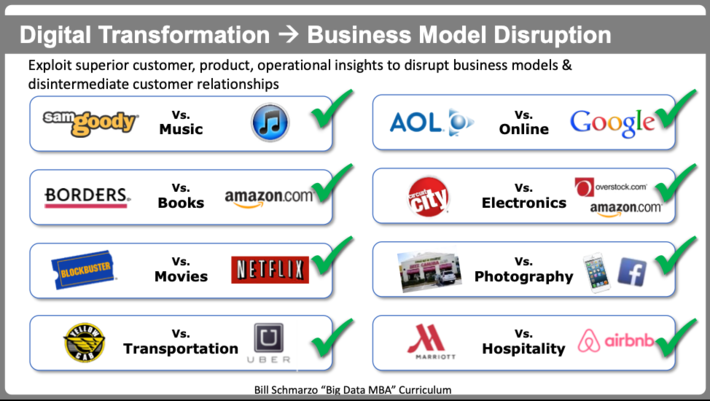
Figure 1: Digital Transformation Drives Business Model Disruption
Hard to swim with sharks with a business strategy anchored in cement…
Whiteboards, on the other hand, represent a “way of thinking” – where ideas can be quickly captured, explored, refined, morphed and possibly discarded – by cross-functional teams collaborating and brainstorming to understand and monetize market patterns and relationships, flesh out responsibilities, draft plans and create a dynamic business strategy that can be constantly tweaked based upon new market dynamics (see Figure 2).
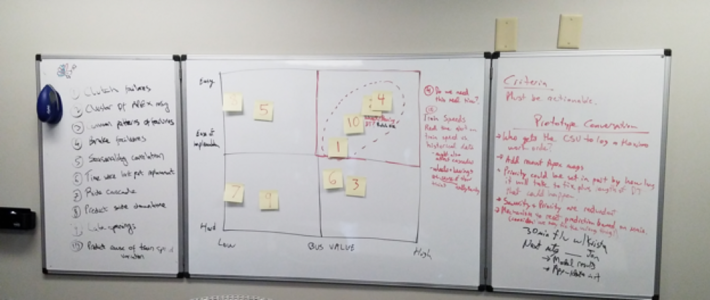
Figure 2: Whiteboard Thinking
Old methods and structures must be challenged and changed in order to prepare the organization to flourish in an environment where innovation can’t be a one-off activity driven by a Chief Innovation Officer. “Scaling Innovation” requires a bigger conversation than just hiring a Chief Innovation Officer and teaching everyone Design Thinking.
So, wow will diverse teams of skilled experts understand the nuances of “organizational improvisation” in coordinating split-second decisions in order to achieve success within an ever-changing competitive environment?Based upon what I’m learning about scaling innovation across a data science community, here are my four critical take-aways (see Figure 3).
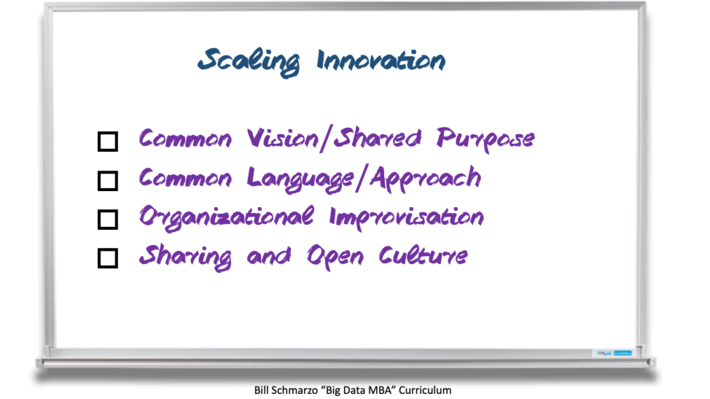
Figure 3: Keys to Scaling Innovation
Key #1: Create a Common Vision
It all starts with a common vision – a shared mission – so that everyone on the team and across the ecosystem understands the organization’s “True North.”
For our data science community, that common data science vision or “True North” is around helping our customers (both internal and external) to become more effective at leveraging data and analytics to power (optimize) their business models and uncover new sources of customer, product and operational value (see Figure 4).
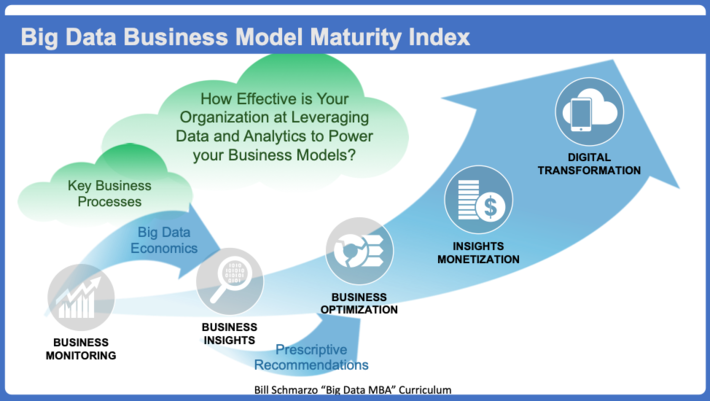
Figure 4: Big Data Business Model Maturity Index
The Big Data Business Model Maturity Index (BDBMI) helps organizations to 1) map or benchmark where they sit today vis-à-vis data and analytics best practices (to understand what “good” looks like), while 2) providing a roadmap to navigate the BDBMI to become more effective at leveraging data and analytics to power their business models.
Key #2: Create a Common Language
It is important that organizations have common language and terminology so that there is no confusion about what is being said, and a standard engagement “framework” that guides their value identification, capture and operationalization process. For our Data Science team, that is the Data Science Value Engineering Framework.
A flexible, malleable framework is more important than a rigid methodology – think guard rails and not railroad tracks – in allowing the team the necessary flexibility to bend the process in response to customer and market conditions, but still have a common framework approach so that everyone understands towards which goals the organization is driving, and the Key Performance Indicators (KPI’s) against which progress and success will be measured (see Figure 5).
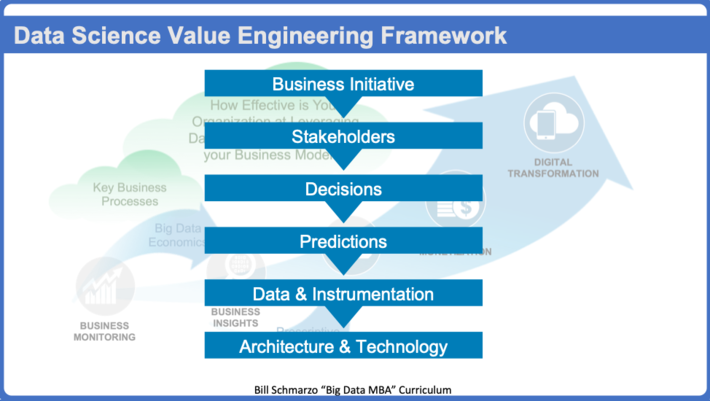
Figure 5: Data Science Value Engineering Framework
The Data Science Value Engineering Framework is very simple (if it’s complicated, then it’s too hard to be able to swap team members in and out of the process while still remaining structural integrity). The process is simple:
- Start with a targeted business initiative; a business or operational goal that the organization is trying to achieve or accomplish over the next 12 to 18 months.
- Identify and engage the key business stakeholders (subject matter experts) who either impact or impacted by the business initiative.
- Interview and conducting brainstorming (facilitated workshops) to identify, validate, value and prioritize the decisions that the key stakeholders need to make in support of the targeted business initiative.
- Have key stakeholders collaborate with the data science team to identify the predictions that will need to be created to support the top priority decisions. See the blog “Thinking like a Data Scientist Series” for more details.
- The Data Science team will then determine (explore/discover) the data sources necessary to drive the predictions that optimize the top priority decisions. In an IoT engagement, this may also germinate into a sensor instrumentation strategy.
- Finally, use the analytics, data and instrumentation strategy drive the technology and architecture decisions. See the blog “Disposable Technology: A Concept Whose Time Has Come” for more insights into creating an agile technology infrastructure.
Key #3: Organizational Improvisation
Like a great basketball team or soccer team (channeling the Women’s Soccer World Cup), successful organizations exhibit organizational “improvisation” or improv in their ability to move team members in and out of teams while maintaining operational integrity. We have this organizational improv challenge in every one of our data scientist engagements. One just can’t add another data scientist to high-functioning data science team and expect that team to keep operating at its optimal efficacy.
To address that challenge, we create data science “Pods” with clearly defined roles, responsibilities and expectations (not to mention a common vision and common languages as we discussed earlier). But we also understand that the head of the pod is free to morph the team structure and reassign roles, responsibilities and expectations during the heat of the battle (see Figure 6).
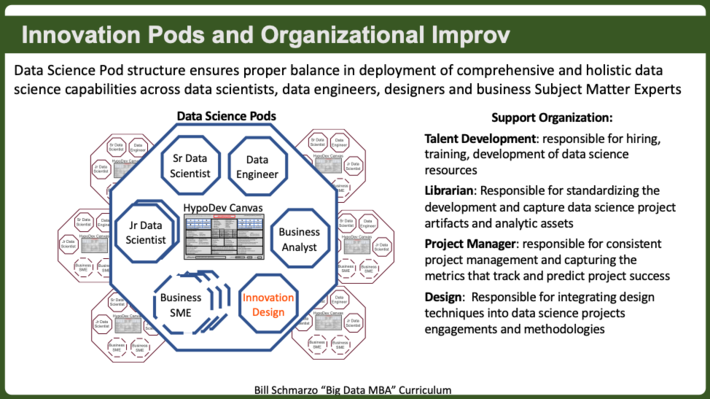
Figure 6: Data Science Pods
By the way, the pods must have a senior person who can make the hard tie-breaker decisions. Otherwise analysis paralysis can set in (especially with a bunch of data science nerds!).
Our pods also contain a design thinker who can not only help to drive innovative thinking on that team with respect to the problem that the data science team is trying to address, but the design thinker is also responsible for the cultural fitness of the team. As I stated in my blog “Is it a Floor Wax or a Dessert Topping?”:
Design Thinking accelerates two important outcomes: 1) fuels innovative thinking around identifying, validating, testing, refining and valuing ideas and 2) drives organizational alignment around those ideas.
Key #4: Culture Built on Sharing, Openness and Trust
Marc Andreessen once stated that software is eating the world. But my personal experience says that culture sits on top of the food chain. But culture, at least for me, is one of those hard things to define; you know a good culture when you’re in one, but it’s hard to understand how to create a culture that supports scaling innovation.
So instead of a statement or directive on how to create culture in terms of scaling innovation, I have found these “guidelines” useful:
- Be humble but not diminutive
- Be confident but not arrogant
- Be inclusive while still remaining decisive
- Be open but results-oriented
- Have fun but still get shit done
- Empower individualism but don’t disrupt the team
- All ideas are worthy of consideration (which does not mean that all ideas are good)
- Be respectful and cordial…always!
- Be open to share and to learn something new and unlearn something old.
Maybe most importantly, is trust. But one cannot just dictate trust – trust has to be earned. Trust accumulates with every transaction and engagement. Trust builds slowly. But if a team can establish an atmosphere of trust, then nothing is impossible.
Scaling Innovation Summary
I read (yea, I’ve been doing lots of reading lately) “What it really takes to scale artificial intelligence” from McKinsey that discussed why organizations are failing in the adoption of Artificial Intelligence (AI). This paragraph summarized the challenge nicely:
“Many organizations aren’t spending the necessary (and significant) time and resources on the cultural and organizational changes required to bring AI to a level of scalecapable of delivering meaningful value—where every pilot enjoys widespread end-user adoption and pilots across the organization are produced in a consistent, fast, and repeatable manner. Without addressing these changes up front, efforts to scale AI can quickly derail.”
Scaling innovation may be the biggest challenge for organizations in the 21stcentury given the onslaught of new digital technologies, data sources, analytic capabilities and communications channels. It will be more whiteboards than maps to flourish with all of these changing dynamics.
As General McChrystal describes in “Team of Teams”, the modern enemy operates in smaller, highly-cohesive teams, exhibits extreme flexibility in the execution of its objectives, learns/unlearns/relearns rapidly and shares a common vision and language.
The future of competition will look very different in the 21stcentury. And as the Golden State Warriors and the US Women’s Soccer Team has taught us, strong individuals will always play a role in creating new sources of innovations, it takes a team to scale innovation.
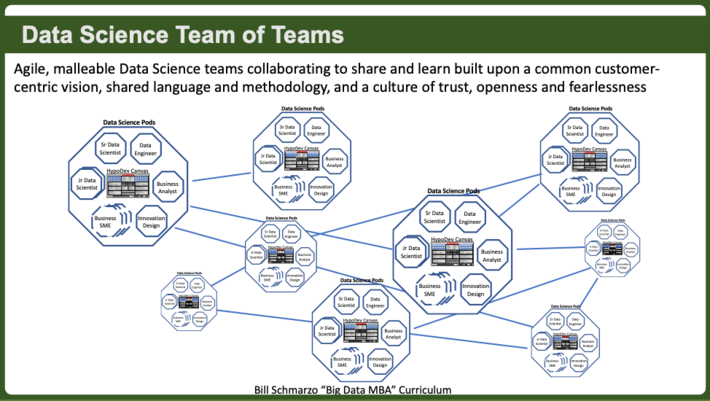
Figure 7: Data Science Team of Teams
